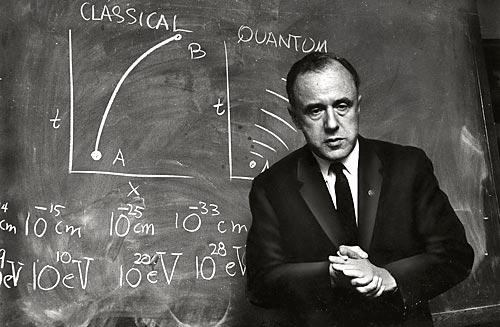|
|
John Wheeler showed how
bright he was from a young age, his first
research paper was published when he was only
19. He would obtain his doctorate in physics at
the age of 21 from John Hopkins University. In
1934 after graduation he moved to Copenhagen to
work with Niels Bohr where together they
co-wrote the paper on the mechanics of nuclear
fission which identified uranium 235 for use in
developing the atomic bomb. In 1938 after moving
back to the United States he took a position at
Princeton University where he stayed until 1976.
In the beginning at Princeton he worked with the
scattering-matrix(S-matrix). The S-Matrix
“relates the initial state and the final state
for an interaction of particles, and which was
to become an indispensable tool in particle
physics” (The Physics of the Universe). It is
part of the foundation of quantum field
theory. 
http://manhattanprojectvoices.org/oral-histories/john-wheelers-interview-1965 |
|||||||||||||
| Michael Pritchard PHYS 212X |